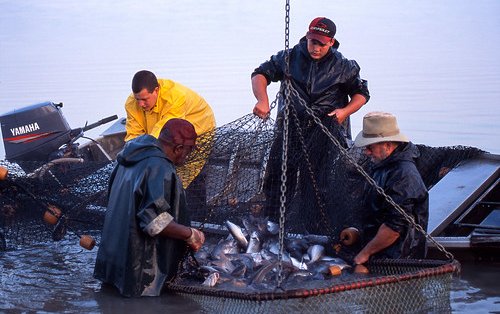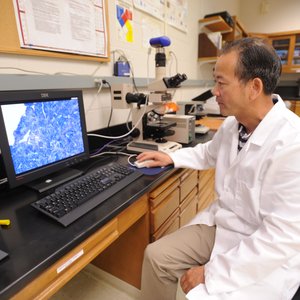Fish farmers in Mississippi
USDA aquaculture research helps fish farmers, like these in Mississippi, improve fish quality and quantity.
Charting a course ahead for the conservation and sustainable farming of freshwater and marine species is a chief focus of the first State of the World’s Aquatic Genetic Resources for Food and Agriculture, a Food and Agriculture Organization (FAO) report that will contain subsections from 89 contributing countries, including the United States.
In June 2017, USDA submitted a final U.S. subsection draft, culminating the yearlong efforts of an interagency expert team to identify and help catalog genetic resources for some of the nation’s most recognized and used aquatic species. These experts came from USDA’s Agricultural Research Service (ARS), USDA’s National Institute of Food and Agriculture, the National Oceanic and Atmospheric Administration, U.S. Fish and Wildlife Service, Food and Drug Administration, Department of State, and the National Aquaculture Association.
ARS Aquaculture National Program Leader Caird Rexroad served as the FAO “National Focal Point” (contact) on behalf of USDA to represent the U.S. government’s contributions to the State of the World’s Aquatic Genetic Resources. He led the group in drafting the U.S. subsection, part of a larger FAO State of the World report that profiles trends, industry practices and issues impacting U.S. aquaculture, which ranks 14th worldwide and produces 608 million pounds of fisheries products worth $1.3 billion annually.
The goals of this joint effort are to conserve, sustain and develop aquatic genetic resources; identify information gaps and threats to effectively manage them; inform national policy development, legislation, research, education and training; increase public awareness of the importance of aquatic genetic resources for food and agriculture; and complement other national or regional reporting activities.
“Aquaculture has tremendous potential to provide healthy protein sources to a growing global population, and the United States has the natural resources and agricultural know-how, including genetic improvement technologies, to help make this happen,” says Rexroad. “Genetic improvement in agricultural animals has been shown to improve yields, production efficiency, product quality, and animal health and welfare. This is also true for aquaculture species.”
Unlike for cattle and other livestock that have been raised for thousands of years, the genetics of farm-raised aquatic species and their wild relatives is not as clear—in part because of their comparatively recent domestication.












